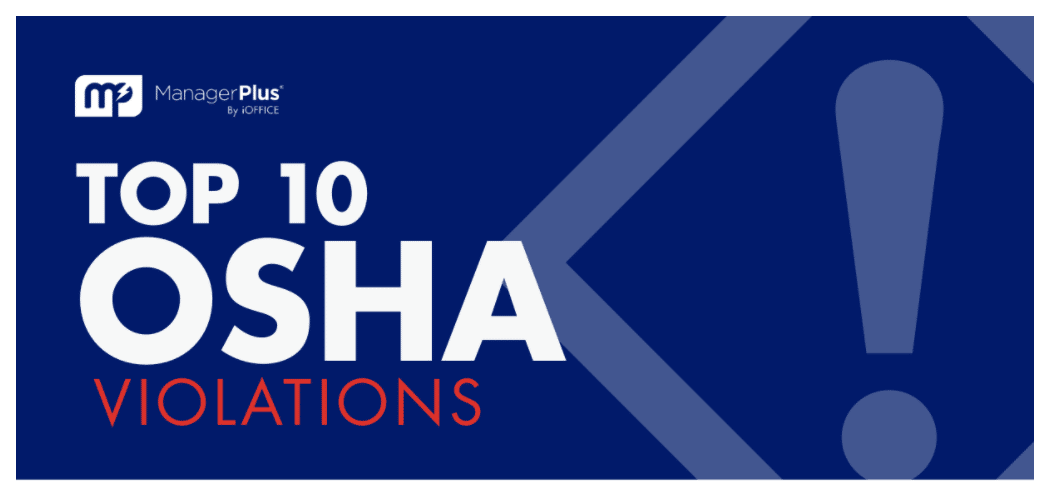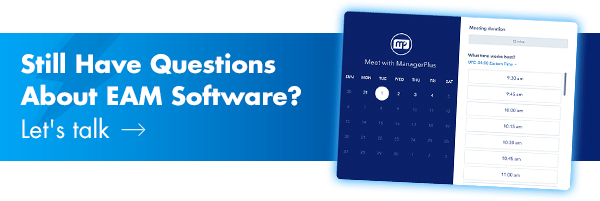Creating a safe working environment for your team requires resources, effort, and commitment but the payoffs are more than worth the costs.
Let’s explore more about facility safety and how you can begin building a culture of safety at your facility.
What is facility safety?
Put simply, facility safety is about developing and implementing procedures and best practices at your organization that provides a safe working environment for your employees and everyone else who works at your facility.
This involves everything from establishing these procedures to regularly evaluating and auditing them to update them as needed.
Why is facility safety important?
Keeping workers safe should be at the top of every company’s priority list no matter what your company does. If you can’t keep your workers safe, they can’t keep your equipment running and products flowing out the door.
But the importance of safety goes beyond just the physical well-being of your employees. A strong safety culture and program at your organization can improve your reputation with customers, increase equipment uptime, and help you avoid costly fines and legal fees.
Benefits of facility safety
Organizations that implement and maintain robust safety measures and procedures can benefit in many ways.
Some of the biggest benefits you can see are:
- Reduced employee injuries
- Reduced downtime
- Lowered costs
- Better opportunities to hire and retain quality workers
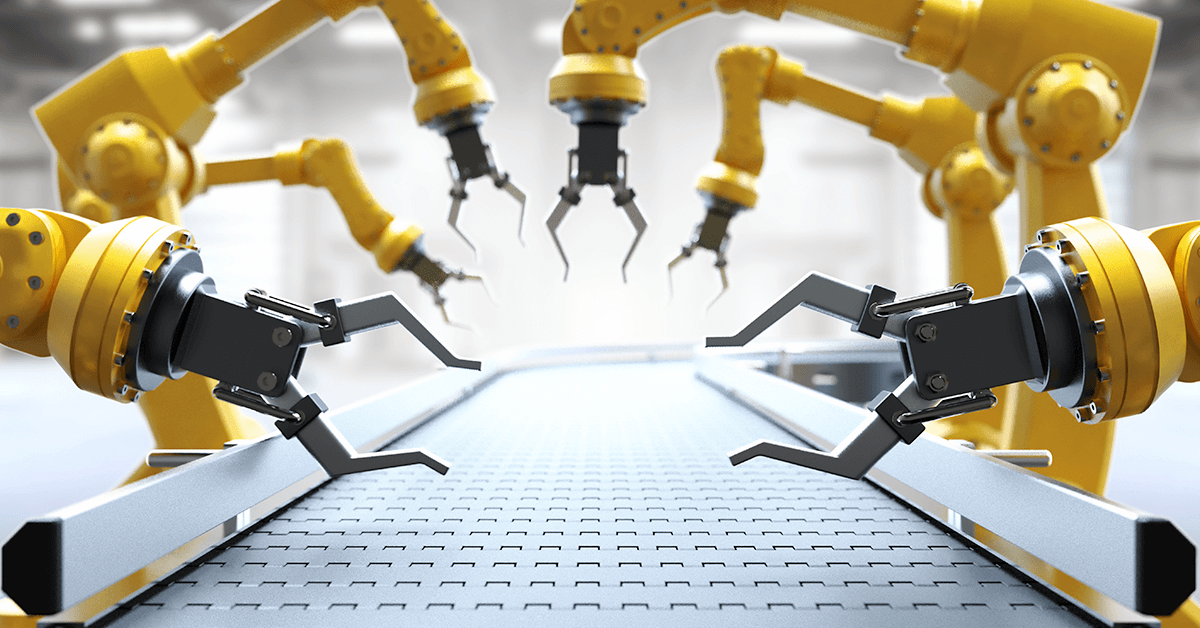
Keep workplace injuries to a minimum
In 2019, the U.S. Bureau of Labor Statistics (BLS) reported over 2.8 million workplace injuries and illnesses, with over 420,000 of those in the manufacturing industry alone. This doesn’t include the over 5,000 fatal workplace injuries that occurred in the same year.
In addition to lowering the number of potentially fatal injuries at your facility, developing and implementing robust safety procedures at your organization helps reduce the severity of injuries at your facility as well.
Ultimately, good safety procedures ensure that everyone goes home at the end of their shift.
Keep your production lines running
Believe it or not, implementing good safety procedures can help you keep your equipment running better which can in turn prevent safety incidents.
The best way to avoid equipment downtime is to develop and implement a thorough preventive maintenance (PM) program. A large part of preventive maintenance programs is regular inspections of your equipment and assets. These inspections are designed to detect any problems with your equipment before they lead to bigger malfunctions, or worse, injuries.
With preventive maintenance software, you can create your own inspection templates and include things like safety inspections as part of your preventive maintenance program so you keep your equipment running and your employees safe.
Bonus Benefit – Avoiding injuries by keeping equipment running also means you avoid wasted man-hours from operators unable to perform their jobs. Any accident at your facility leads to extra, unanticipated downtime.
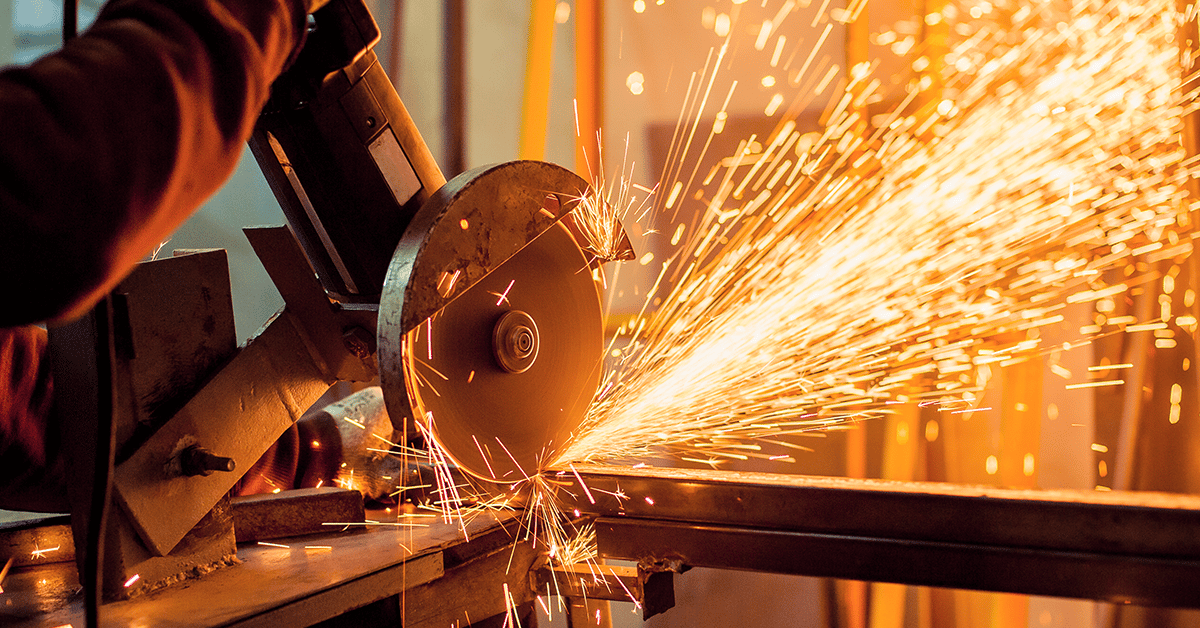
Avoid costly injury-related expenses
According to the 2020 Workplace Safety Index by Liberty Mutual, the top 10 causes of workplace injuries cost U.S. businesses over $1 billion a week in worker’s compensation expenses alone. These are just the direct costs of worker’s compensation and don’t account for additional expenses like a rise in your monthly insurance premiums.
Creating a safe working environment for your team reaps benefits beyond the physical health of your workers.
Retain quality workers by proving you care about their health
Everyone wants to feel safe wherever they go and especially when it comes to the workplace. We spend a vast amount of our time at our jobs and if your team is always worried in the back of their minds about getting injured on the job, they won’t be as productive.
Not only that but they’ll be also distracted which inevitably leads to mistakes that could get someone hurt. It’s a vicious cycle – they know their company doesn’t put much effort in keeping them safe, so they’re always wondering if they’ll be next, and then someone makes a mistake and does end up hurt.
Investing the time, money, and energy in developing and maintaining a safe working environment lets your team know that you value their wellbeing and are committed to giving them a safe working environment.
The same principle applies to how you respond to safety events. If you try to brush it aside or minimize it or encourage someone not to seek worker’s compensation, it can leave the rest of your team feeling like you don’t have their back. It’s hard to imagine anyone would want to keep working for a company like that for very long.
While zero safety incidents is always the goal to aim for, the way you work to prevent incidents and respond to them if they do occur instills confidence and loyalty from your team.
Bonus Benefit – This principle also works when acquiring new talent. An organization with higher safety standards and a better track record of avoiding incidents is more appealing to prospective employees.

Creating a facility safety strategy and plan
Every business and organization is different with unique needs, challenges, equipment, and staff, but there are some fundamental ideas that are always good to incorporate when building your facility’s safety program.
You need to make sure you plan for:
- Your facility layout
- Markings
- Exit paths
- Basic fire safety
- Trip hazards
- Equipment availability
Plan your facility layout with safety in mind
Looking around your facility, is there enough spacing between and around heavy equipment? The recommended available space is approximately 6 feet to make sure the operators have enough room to comfortably maneuver and don’t have to constantly check their area to ensure they don’t hit or injure someone in their immediate workspace.
This is especially true around areas where moving equipment is common. Is your loading dock clear of obstacles and foot traffic so the forklift operators can operate safely without the worry of hitting anyone? If your facility is too cramped and difficult for your workers to comfortably move and work in, it may be worth investing in a large space or reevaluating your layout to see if there are places you could create more space.
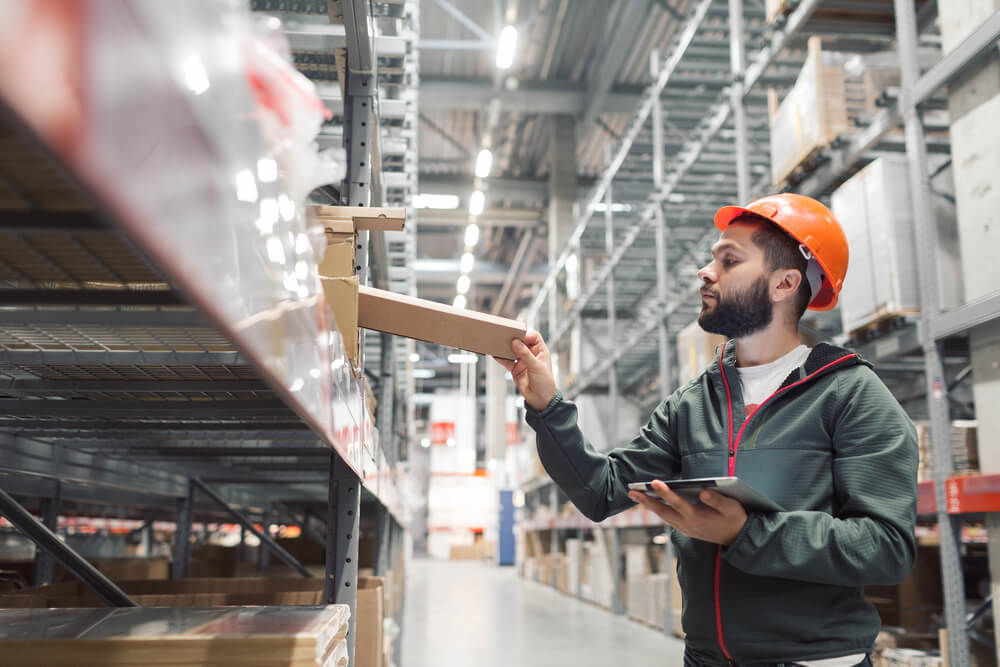
Make sure potential hazards are clearly marked
Most of the time if employees are moving across your facility, they are distracted by the task at hand increasing the probability of encountering a hazard that could result in an injury if it’s not clearly marked. This includes everything from low-hanging ceilings or uneven steps to electrical boxes and forklift routes.
If there’s an area in your facility where there is a potential hazard, it should be clearly marked. OSHA requires companies to have clear markings for most potentially hazardous areas but it doesn’t hurt to be proactive. They won’t fine you for having a few extra signs up.
Clear markings are even more imperative if there’s something unusual happening in the facility like construction on one of the office floors. If there is some remodeling happening while tenants are still on the floor, you’ll want to make sure everything is clearly marked because there are now new potential hazards that tenants may not be acclimated to yet.
All exit paths should be clear and easy to find
Just like how every flight attendant informs you of the exits and their markings on your aircraft before takeoff, the exit paths in your facility should always be clearly marked and free of obstacles.
In the event of an emergency, the most dangerous thing is not being able to evacuate the area. If exits are hidden down dark hallways or behind equipment, not only are you in violation of several government building codes, but the danger to your employees increases exponentially in the event of an emergency.
Keep fire safety equipment up to date
When was the last time your building’s fire suppression system was inspected or maintained? A recent report from the National Fire Prevention Association (NFPA) showed that lack of maintenance is one of the leading factors in situations where the fire suppression system either failed or was ineffective during an emergency. Don’t wait until the building inspector fines you for having a broken or outdated fire suppression system. Make sure you’re having it inspected regularly.
Fire extinguishers are another one that’s easy to let slide. They’re usually out of sight and out of mind so it’s easy to forget to check them. As with the fire suppression system, not only can you be fined if they are expired, but having updated, working fire extinguishers can save lives and prevent larger catastrophes.
Imagine the danger if your fire extinguishers and your fire suppression system both failed in an emergency. Make sure you build in regular inspections and updates of your fire equipment into your safety program.
Avoid trip and falling hazards with the 5S method
For 2019, slips, trips, and falls were the second highest cause of workplace injuries according to BLS and falls were the leading cause of workplace fatalities. Needless to say, these hazards can be quite dangerous, but there are methods you can implement to reduce the likelihood of them causing an injury.
The Kaizen methodology was developed by the Toyota company and provides the groundwork for making processes and tasks more efficient. The 5S is part of the Kaizen framework and provides a great foundation for ensuring your facility is clear of trip and fall hazards.
The 5S are:
- Sort
- Set in order
- Shine
- Standardize
- Sustain
The idea behind the 5S is to make sure that every piece of equipment has a designated place in your facility that the equipment remains in and always gets returned after being used.
As part of building out your safety procedures, any loose equipment that gets used regularly should be sorted, organized, cleaned, and identified, the checkout and usage procedures should be standardized, and the location of the equipment and the standards and procedures that accompany its usage should be consistent.
Make sure everyone always has proper safety equipment
This is a big one, especially in light of the current global climate. Every single one of your workers should have easy access to personal protective equipment (PPE). This may look different for every organization but no matter who occupies your facility, they need to be able to easily get access to masks and gloves, and industries that require other PPE should make sure they have adequate access to safety gear as well.
The good news is that it’s pretty easy to make this equipment accessible without increasing your costs too much. You’ve probably seen vending machines in the airport that can sell you headphones or iPads and the same types of vending machines exist for PPE equipment. You can place them in employee lounges or somewhere safe on the floor and employees can get to them when they need them.
Create a safety culture
Establishing a safe working environment involves more than just planning. It requires a change of mindset. The importance of safety is something that needs to be adopted culturally at every level of your company, from the technicians to the CEO. It’s important to make sure everyone on the team is bought into the idea of keeping your workplace safe or the most robust safety plans and procedures won’t amount to much of anything.
Establish regular safety training
This is certainly part of creating a safety plan for your facility, but it’s important enough that it needs its own section. Far too often organizations think that one safety training once every now and then, or when threatened with a fine or citation, is enough. There’s also a common mindset that safety trainings are not worth the loss in productivity to bring everyone off the line and into a day of training.
The truth is, no amount of extra productivity or profit is worth risking the health of one of your employees. Safety plans and procedures are only effective if your team is properly trained on them and held accountable for adhering to them. Ongoing training and education is important for any job, no matter the industry, and safety training and education is a big part of that.
Safety training also needs to be repeated. “One-and-done” safety briefings are rarely effective in the long run. Athletes don’t play the game one time and are suddenly the best in the world, they practice, regularly and routinely to get better and better. Building a safe work environment requires building a habit and mindset of doing things safely.
Establish good safety procedures with EAM software
When it comes to any task, the right tool can make all the difference. Enterprise asset management software (EAM) software is a great tool to help you keep your workplace safe.
EAM software is all about helping you keep an eye on your equipment, assets, and facility so you can spot potential problems and hazards before they become costly or dangerous issues. With EAM software you can build customized safety and inspection checklists for your assets and your facility and automatically schedule them to ensure they get done regularly.
You can also include notes and recommended best practices from your more senior techs making it easier to onboard or retrain your team even if the senior techs leave the company.
With EAM software you can also build out a solid preventive maintenance program to help you keep your equipment running safely and efficiently. Preventive maintenance is all about tracking your asset performance over time, so you know when it’s time to perform maintenance to avoid failure.
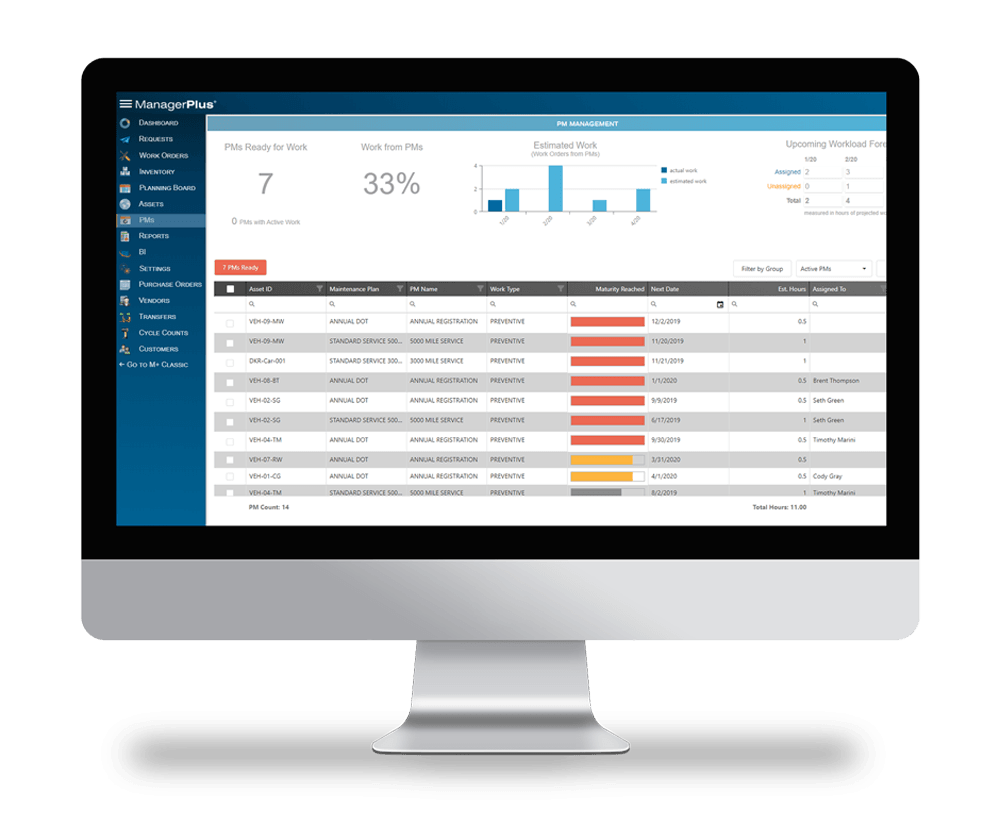 Next steps
Next steps
The best way to get started with developing good safety procedures at your organization is by implementing EAM software and the best way to do that is to talk with the experts.
If you’re ready to explore EAM software a bit more, you can schedule a live demo with us where you’ll get a personalized, one-on-one walkthrough of our platform and have the chance to ask questions about the unique safety challenges are your organization.
One common challenge of any new initiative can be getting buy-in from the executive management. To help you out with that, we’ve summarized the main points of this article in the section below so you can easily send it to them and get them on board.
Summary of facility safety
Keeping your employees safe at your facility or job site is one should be one of the top priorities for any company and the benefits of a safe workplace stretch beyond the physical wellbeing of your employees.
A safe facility also helps you:
- Reduce equipment downtime
- Avoid fines and cut costs
- Retain and hire good people
Building a safe work environment starts with building out robust safety procedures and best practices and using EAM software can help you automate safety inspections and tasks so you know they’re getting done when needed. Establishing these routine safety procedures also helps to build a culture of safety at your organization and makes it easy to offer continued safety training for your team.
